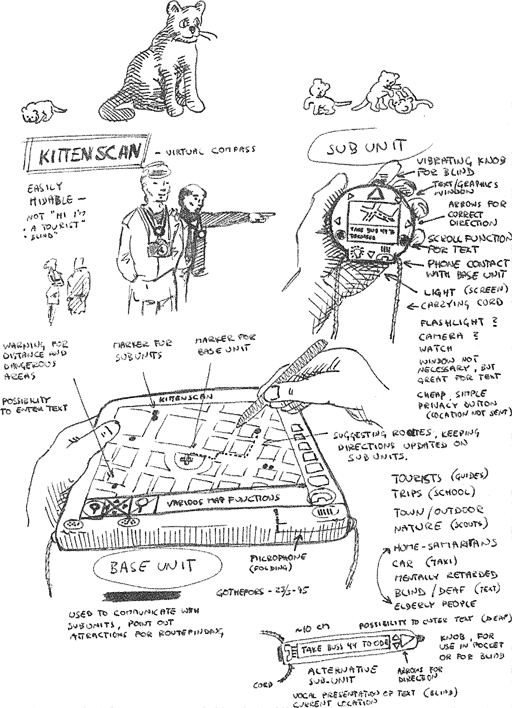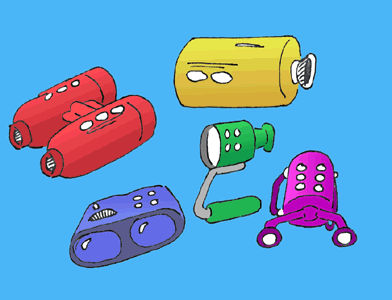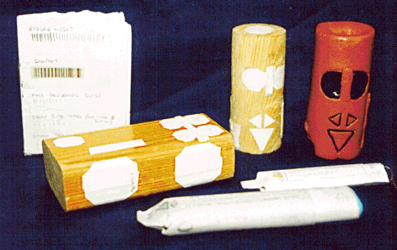

We decided that the portable guide unit was the easier one to design, and very dependent on the size and design of the smaller tourist unit, which had to be small enough to be used, and large enough to be usable. Thus, the focus was the smaller unit. It should contain a small text display for short messages and information about public transportations, verbal communication with the guide and a few buttons for various interactive choices. It should reveal its location to the guide unit, if the user wanted to, so the guide could inform and direct the tourists.

We produced a few prototypes of different sizes, and started interviewing information providers, guides, hotel personnel and tourists. Analysis of the interviews showed that the tourists did not seem to have this compassionate longing for the correct directions. They wanted to be more or less lost. It was part of the fun being a tourist. When they needed information, they wanted it to be accurate and delivered by a person. We also found that there was already a fairly similar product available in the shops. This device did not have the small size or all the functionality of ours, but it was just a matter of time and integration. The demand was very limited as well. Thus, the product was already invented, and noone wanted it. This led us to find another group with more need of an information device similar to this.
The new device would require a larger display. Ideas were numerous, like maplike displays and backhand notebooks, but that would basically only be another notebook with position sense, direction sense and communication with a database. This was not the goal of our project.
A new idea was to change the means of display from a board display to glasses. Then you could imitate any size of display simply by changing resolution and display angle. You could also superimpose purely fictive data on the real view, and make it dependent on position and direction. The existing (and probably the future) VR glasses had four problems, when applied to our scenario. First, they were too heavy and clumsy to be comfortably worn, especially when in company, and in a city. Second, they were designed to be worn all the time, which was not necessary. Third, things worn in the face are very fashiondependent, which would make people hesitant to buy their first, especially since the size would be reduced the next year. The last obstacle was that they were already invented, making it fall into the same category as the notebook idea.

The two best shapes were made into very primitive prototypes and tested for originality and usability. The best design seemed to be the one-eye, cylindrical one.

The text input, which was desired to be sufficiently fast for short messages, was another problem that needed to be solved. We decided to use the DYMO-metaphor, where you turn a wheel until the correct letter appears in a small box. Then you press a button to enter that letter. The round design was suitable for the wheel, which immediately got the name Joywheel. The device also has a Joyplate, similar to a joystick, and three buttons.
Now we had produced an information presentation display, which could easily integrate information about physical location and direction with electronic information about the surroundings. The original idea, a tourist information system, could be implemented as a tourist program, displaying information from a city database, and a navigation program, sensing current location and direction, and communicating with a timetable database.
The interface was tested, using twenty-five paper printouts and a paper cone, to simulate a scenario with the actual angle of sight. After several user tests and a few modifications, we decided that the item was useful.

Sven Trebard Gothefors <wiz@wiz.se>